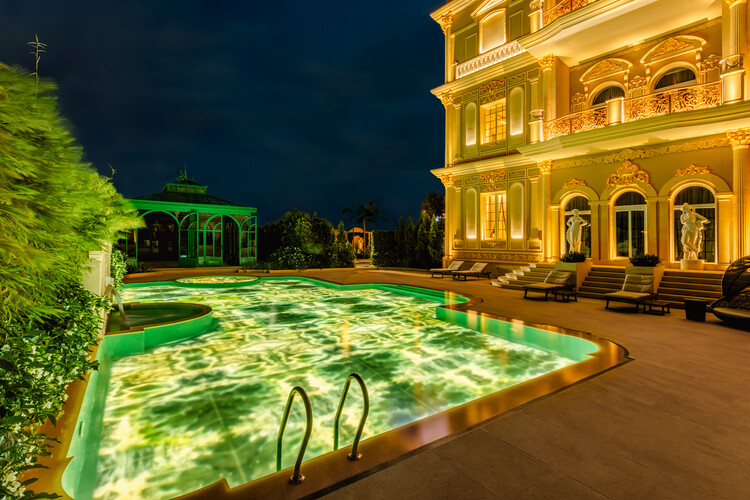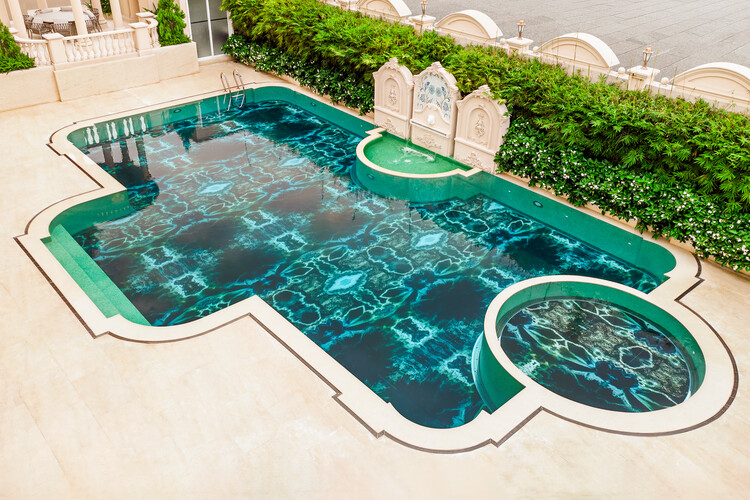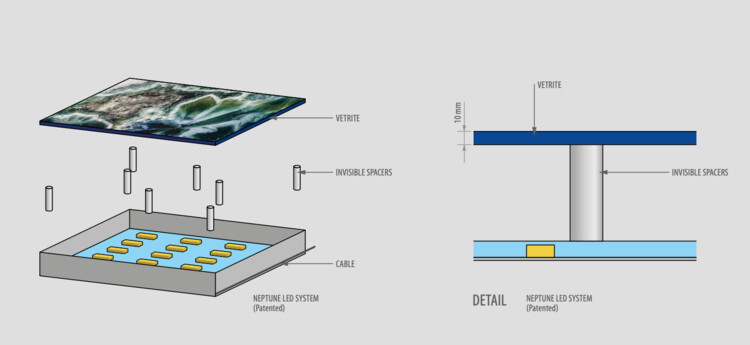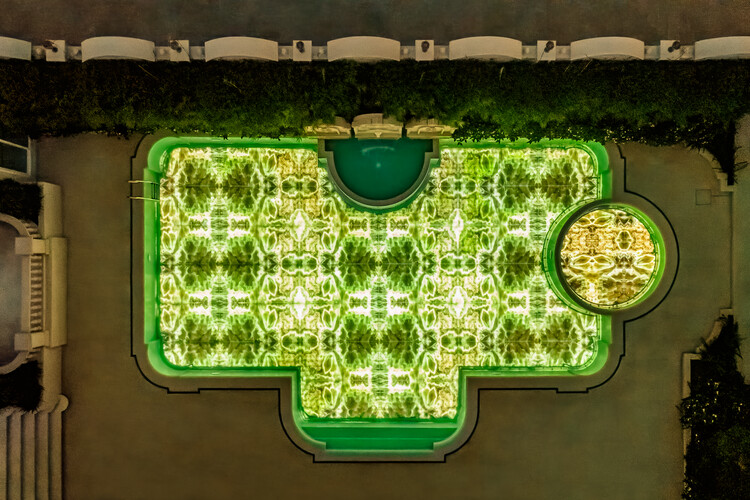
The trajectory of glass in architecture reflects the technological evolution of humankind. For centuries, it was a fragile, opaque material, restricted to small openings in churches or aristocratic residences, limited in size, with uneven transparency and a largely secondary role. With the Industrial Revolution and advances in manufacturing processes, this condition changed dramatically. From artisanal and imperfect stained glass, we now have a wide range of architectural applications, from fully glazed skyscraper facades to translucent pedestrian bridges, lightweight roofs, smart partitions, and movable elements. One of the most surprising uses, once thought to be impractical, is the direct interaction of glass with large volumes of water. Today, we see pools with transparent walls or floors that project out from buildings, float above streets, or visually merge with their surroundings, creating striking sensory experiences. A remarkable feat, especially considering that for a long time, glass was considered too fragile for submerged environments.
Within this context of technical transformation and expanding possibilities, decorative glass finds a new expression with Vetrite, developed by the Italian company SICIS. It is a large-format surface made from layered glass combined with decorative polymer films. This material was used in a private residence known as Olympic Villa, in Phnom Penh, Cambodia. The design intent was bold: to transform the swimming pool into a central architectural element, not only functional but also luminous and sculptural. The decorative glass panels, applied here through a backlit underwater system, were cut into 120 x 120 cm modules and installed in a bookmatch layout, where the graphic pattern mirrors itself symmetrically, creating visual continuity. The chosen version is part of the Vetrite Gem Glass collection, which explores mineral-inspired patterns and offers impressive depth and light transmission.


The project's technical differentiator is the Neptune system, developed and patented by SICIS specifically for underwater backlit applications. Operating on low voltage, it eliminates the risk of electric shock (an essential safety feature in both residential and public settings such as spas and hotels). The lighting system is placed behind the panels, using a carefully designed LED matrix to distribute light evenly. The entire assembly is supported by waterproofing layers and concealed mechanical structures that provide stability under water pressure, constant humidity, and thermal variations. The result is a continuous, stable light-emitting surface that remains visible even during the day.

When illuminated, the pool glows from within, and its glass surfaces seem to pulse with aquatic tones, like submerged crystalline formations. The texture and pattern of Vetrite evoke the complexity of natural stone, with graphic precision that echoes digital design. At night, the effect is sculptural. By day, the pool subtly reflects its surroundings, and the interplay of light, water, and material transforms the space into a living element that evolves with time and light.
The system was designed for broader applications, with its safety and flexibility making it ideal for projects in luxury resorts, wellness centers, spas, and hospitality spaces that seek to integrate surface, light, and water into a unified architectural language. Compatible with various Vetrite collections, it offers customization in size, finish, and lighting intensity, granting architects broad creative freedom.

The example of Olympic Villa shows that material innovation can open new dimensions in architecture, transforming once-secondary elements into sensory and expressive protagonists. The combination of decorative glass, lighting technology, and structural precision redefines what we understand a pool to be: a living surface that pulses, responds, and composes the environment with poetic intensity. The Vetrite Neptune system by SICIS goes beyond aesthetics, it represents a convergence of engineering, art, and innovation, pointing the way toward an architecture that is increasingly immersive, emotional, and integrated with both matter and light.












